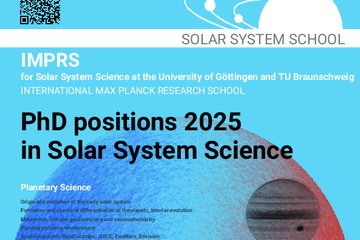All genres
61.
Journal Article
Instabilities in energetic particle modified shocks. Astronomy and Astrophysics 233, pp. 275 - 284 (1990)
62.
Journal Article
Stability of the cometary ionopause. Advances in Space Research 9, pp. (3)305 - (3)308 (1989)
63.
Journal Article
Stability of a cometary ionosphere/ionopause determinated by ion-neutral friction. Astrophysical Journal 344, pp. 932 - 939 (1989)
64.
Journal Article
Hot plasma and energetic particles in Neptune's magnetosphere. Science 246, pp. 1483 - 1489 (1989)
65.
Journal Article
Synchrotron radiation treated by the Weizsäcker-Williams method of virtual quanta. Astronomy and Astrophysics 208, pp. 351 - 356 (1989)
66.
Journal Article
Model structure of a cosmic-ray mediated stellar or solar wind. Astronomy and Astrophysics 194, pp. 297 - 303 (1988)
67.
Journal Article
Observations of low-latitude electron precipitation. Journal Geophysical Research 93, pp. 4131 - 4133 (1988)
68.
Journal Article
Substorm expansion into the polar cap. Annales Geophysicae 6, pp. 559 - 572 (1988)
69.
Journal Article
The formation of a magnetic field free cavity at comet Halley. Nature 325, pp. 418 - 429 (1987)
70.
Journal Article
Acceleration of cometary plasma in the vicinity of comet Halley associated with an interplanetary magnetic field polarity change. Geophysical Research Letters 14, pp. 987 - 990 (1987)
71.
Journal Article
The solar wind shock termination. Advances in Space Research 6, pp. 27 - 32 (1986)
72.
Journal Article
The magnetic field of Uranus. Nature 319, pp. 267 - 268 (1986)
73.
Journal Article
Metallic ions in cometary comae and plasma tails. Nature 321, pp. 682 - 684 (1986)
74.
Journal Article
The acceleration of particles in the vicinity of comets. Planetary and Space Science 34, pp. 1061 - 1065 (1986)
75.
Journal Article
The magnetosphere of Uranus: Hot plasma and radiation environment. Science 233, pp. 97 - 102 (1986)
76.
Journal Article
The solar wind. Solar Physics 100, pp. 575 - 586 (1985)
77.
Journal Article
Large-scale solar modulation of gt;500 MeV/Nucleon galactic cosmic rays seen from 1 to 30 AU. Journal Geophysical Research 90, pp. 517 - 520 (1985)
78.
Journal Article
Reply. Journal Geophysical Research 90, pp. 11103 - 11104 (1985)
79.
Journal Article
Estimates of galactic cosmic ray spectra at low energies. Astronomy and Astrophysics 149, pp. 7 - 10 (1985)
80.
Journal Article
Cosmic ray acceleration at stellar wind terminal shocks. Astrophysical Journal 298, pp. 684 - 709 (1985)











